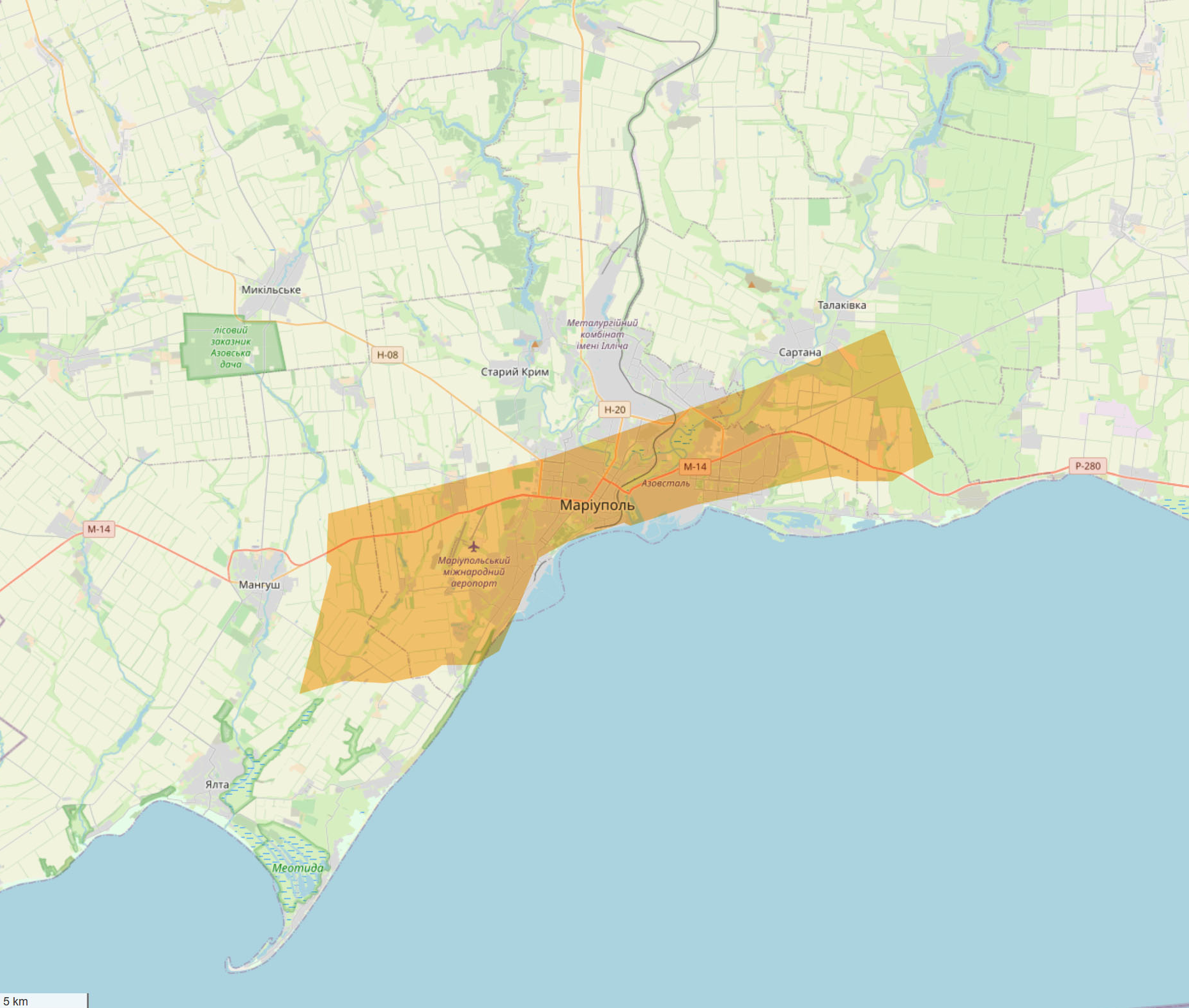

Alex Cartwright
Senior Cartographer & GIS Specialist
Alex Cartwright is a renowned cartographer and geographic information systems specialist with over 15 years of experience in spatial analysis and data...
Geographic Analysis
What This Map Shows
This visualization presents a stark comparison between two of the most devastated regions in recent history: Mariupol, Ukraine, and Gaza. Both areas have experienced severe destruction due to ongoing conflicts, and this map highlights their physical sizes alongside the extent of devastation they have faced. Mariupol, once a bustling port city, has been largely reduced to ruins amidst the Russian invasion of Ukraine, while Gaza, represented in orange, continues to suffer under the effects of prolonged conflict and blockade. Although the situations in these two regions are distinct, the map serves as a poignant reminder of the human cost of war.
Deep Dive into Urban Destruction
Urban destruction, particularly in conflict zones, is a critical topic that deserves more attention. It often results in significant loss of infrastructure, economic collapse, and displacement of populations. Mariupol and Gaza exemplify this tragic phenomenon.
Mariupol, strategically located on the Sea of Azov, has faced relentless bombardment since the onset of the Russian invasion in February 2022. Prior to the war, this city was home to nearly 450,000 residents and was vital to Ukraine's economy. However, as of late 2023, estimates suggest that a significant portion of its population has either fled or been killed, with the city’s urban landscape marred by crumbling buildings and destroyed homes. The destruction of essential services—water, electricity, and healthcare—has compounded the suffering of those who remain.
On the other hand, Gaza has been a focal point of conflict for decades, characterized by recurrent violence and a blockade that has stifled development and economic opportunities. The densely populated area, home to around 2 million people, has faced multiple military operations that have devastated its infrastructure. The destruction of homes, schools, and hospitals has led to a humanitarian crisis where basic necessities like clean water and medical care are in perilously short supply.
Interestingly, the impact of such destruction extends beyond immediate physical damage. Urban areas that experience high levels of destruction often find it challenging to recover, both economically and socially. The loss of homes and businesses can lead to long-term economic downturns, perpetuating cycles of poverty and instability. In Mariupol, the rebuilding process will require substantial investment and support, which may be hindered by ongoing conflict. Similarly, in Gaza, the limited access to resources due to the blockade complicates recovery efforts, leaving many residents in a state of perpetual struggle.
Regional Analysis
When we analyze the regions shown in the map, it’s essential to understand the broader context of their respective conflicts. Mariupol is located in Eastern Ukraine, an area that has been a battleground since 2014, when Russia annexed Crimea and pro-Russian separatists took control of parts of the Donetsk region. The recent escalation in violence has led to an unprecedented level of destruction, not only in Mariupol but across the region.
In contrast, Gaza's situation is influenced by a long-standing conflict between Israel and Hamas, which has led to repeated military incursions and airstrikes. The area is marked by a unique geopolitical situation, where the combination of high population density and limited land access creates a volatile environment. The devastation in Gaza has been compounded over the years, where each conflict leaves deeper scars on an already fragile infrastructure.
What’s fascinating is how both regions, despite their differences in context and governance, reflect the universal consequences of war—displacement, trauma, and loss. The comparison serves as a sobering reminder that destruction knows no boundaries.
Significance and Impact
Understanding the implications of urban destruction in Mariupol and Gaza is crucial for several reasons. First, it sheds light on the human impact of conflicts that often go unnoticed or underreported. The suffering of civilians in war zones is often overshadowed by political discourse, yet this map emphasizes that behind every statistic is a human story.
Moreover, the ongoing destruction in these regions signifies broader trends in global conflict. As geopolitical tensions rise, urban areas increasingly become targets in warfare, leading to profound humanitarian crises. The international community must recognize these patterns and respond with urgency.
Future projections indicate that unless there is a significant shift in conflict resolution strategies, both Mariupol and Gaza may continue to be emblematic of urban warfare’s devastating legacy. The lessons learned from these cases could inform more effective humanitarian responses and policies aimed at preventing further destruction. Ultimately, while the map highlights a tragic reality, it also calls for compassion and action in addressing the needs of those affected by such conflicts.
Visualization Details
- Published
- October 15, 2025
- Views
- 16
Comments
Loading comments...